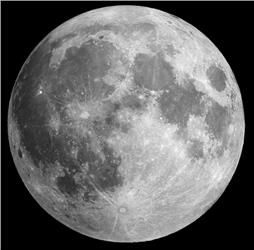3D Magnetic Recording: Unprecedented Hard Drive Storage Density Unlocked
![]()
![]() A new HDD technology involving three-dimensional magnetic recording could enhance storage capacities and reduce the number of HDDs needed, promising future cost and energy efficiencies. Credit: SciTechDaily.com Possibility of ultra-high density hard disk drives with areal densities exceeding 10 Tbit/in² using multi-level magnetic recording. Research groups from NIMS, Seagate Technology, and Tohoku University have made a breakthrough in the field of hard disk drives (HDD) by demonstrating the feasibility of multi-level recording using a three-dimensional magnetic recording medium to store digital information. The research groups have shown that this technology can be used to increase the storage capacity of HDDs, which could lead to more efficient and cost-effective data storage solutions in the future.
A new HDD technology involving three-dimensional magnetic recording could enhance storage capacities and reduce the number of HDDs needed, promising future cost and energy efficiencies. Credit: SciTechDaily.com Possibility of ultra-high density hard disk drives with areal densities exceeding 10 Tbit/in² using multi-level magnetic recording. Research groups from NIMS, Seagate Technology, and Tohoku University have made a breakthrough in the field of hard disk drives (HDD) by demonstrating the feasibility of multi-level recording using a three-dimensional magnetic recording medium to store digital information. The research groups have shown that this technology can be used to increase the storage capacity of HDDs, which could lead to more efficient and cost-effective data storage solutions in the future. Enhancing Data Storage Capacity
Data centers are increasingly storing vast amounts of data on hard disk drives (HDDs) that use perpendicular magnetic recording (PMR) to store information at areal densities of around 1.5 Tbit/in². However, to transition to higher areal densities, a high anisotropy magnetic recording medium consisting of FePt grains combined with heat-assisted laser writing is required. This method, known as heat-assisted magnetic recording (HAMR), is capable of sustaining areal recording densities of up to 10 Tbit/in². Furthermore, densities of larger than 10 Tbit/in² are possible based on a new principle demonstrated by storing multiple recording levels of 3 or 4 compared with the binary level used in HDD technology. ![]()
![]() Schematic view of (top) currently used HAMR and (bottom) three-dimensional magnetic recording systems. In the three-dimensional magnetic recording system, the Curie temperature of each recording layer differs by about 100 K and data are written to each layer by adjusting the laser power. Credit: Yukiko Takahashi NIMS, Thomas Chang Seagate Technology, Simon Greaves Tohoku University
Schematic view of (top) currently used HAMR and (bottom) three-dimensional magnetic recording systems. In the three-dimensional magnetic recording system, the Curie temperature of each recording layer differs by about 100 K and data are written to each layer by adjusting the laser power. Credit: Yukiko Takahashi NIMS, Thomas Chang Seagate Technology, Simon Greaves Tohoku University Innovations in 3D Magnetic Recording
In this study, we succeeded in arranging the FePt recording layers three-dimensionally, by fabricating lattice-matched, FePt/Ru/FePt multilayer films, with Ru as a spacer layer. Measurements of the magnetization show the two FePt layers have different Curie temperatures. This means that three-dimensional recording becomes possible by adjusting the laser power when writing. In addition, we have demonstrated the principle of 3D recording through recording simulations, using a media model that mimics the microstructure and magnetic properties of the fabricated media. Future Prospects and Implications
The three-dimensional magnetic recording method can increase recording capacity by stacking recording layers in three dimensions. This means that more digital information can be stored with fewer HDDs, leading to energy savings for data centers. In the future, we plan to develop processes to reduce the size of FePt grains, to improve the orientation and magnetic anisotropy, and to stack more FePt layers to realize a media structure suitable for practical use as a high-density HDD. This research was published in Acta Materialia on March 24, 2024. eference: "Dual-layer FePt-C granular media for multi-level heat-assisted magnetic recording" by P. Tozman, S. Isogami, I. Suzuki, A. Bolyachkin, H. Sepehri-Amin, S.J. Greaves, H. Suto, Y. Sasaki, T.Y. Chang, Y. Kubota, P. Steiner, P.W. Huang, K. Hono and Y.K. Takahashi, 24 March 2024, Acta Materialia. DOI: 10.1016/j.actamat.2024.119869 This research was conducted by Dr. P. Tozman, Distinguished Researcher, and Dr. Yukiko Takahashi, Group Leader of NIMS Center for Magnetic and Spintronics Materials Research, Dr. T.Y. Chang, Researcher at Seagate Technology, and Prof. S.J. Greaves of Tohoku University. This work was supported by Japan Science and Technology Agency (JST) Strategic Basic Research Programs (CREST) "Integrated Devices and Systems Utilizing Information Carriers" JPMJCR22C3.


 A new HDD technology involving three-dimensional magnetic recording could enhance storage capacities and reduce the number of HDDs needed, promising future cost and energy efficiencies. Credit: SciTechDaily.com Possibility of ultra-high density hard disk drives with areal densities exceeding 10 Tbit/in² using multi-level magnetic recording. Research groups from NIMS, Seagate Technology, and Tohoku University have made a breakthrough in the field of hard disk drives (HDD) by demonstrating the feasibility of multi-level recording using a three-dimensional magnetic recording medium to store digital information. The research groups have shown that this technology can be used to increase the storage capacity of HDDs, which could lead to more efficient and cost-effective data storage solutions in the future.
A new HDD technology involving three-dimensional magnetic recording could enhance storage capacities and reduce the number of HDDs needed, promising future cost and energy efficiencies. Credit: SciTechDaily.com Possibility of ultra-high density hard disk drives with areal densities exceeding 10 Tbit/in² using multi-level magnetic recording. Research groups from NIMS, Seagate Technology, and Tohoku University have made a breakthrough in the field of hard disk drives (HDD) by demonstrating the feasibility of multi-level recording using a three-dimensional magnetic recording medium to store digital information. The research groups have shown that this technology can be used to increase the storage capacity of HDDs, which could lead to more efficient and cost-effective data storage solutions in the future. 
 Schematic view of (top) currently used HAMR and (bottom) three-dimensional magnetic recording systems. In the three-dimensional magnetic recording system, the Curie temperature of each recording layer differs by about 100 K and data are written to each layer by adjusting the laser power. Credit: Yukiko Takahashi NIMS, Thomas Chang Seagate Technology, Simon Greaves Tohoku University
Schematic view of (top) currently used HAMR and (bottom) three-dimensional magnetic recording systems. In the three-dimensional magnetic recording system, the Curie temperature of each recording layer differs by about 100 K and data are written to each layer by adjusting the laser power. Credit: Yukiko Takahashi NIMS, Thomas Chang Seagate Technology, Simon Greaves Tohoku University 







